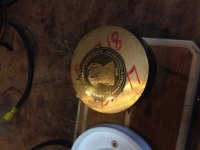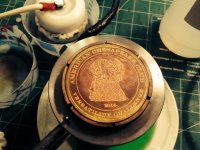Trboatworks
Diamond
- Joined
- Oct 23, 2010
- Location
- Maryland- USA
I have a fixture which has a brass plate sitting on a graphite block with low contact pressure and it needs to carry some amperage.
The graphite block is energizing the plate for a electro-chemical process.
I am getting arcing and poor conductivity & either need to redesign the fixture or use some dodge to improve the contact area.
I had thought there was a paste that would work- just a dab will do ya?
Also- under the gun so I have to work this out with what I can find around town on a Sunday..
The graphite block is energizing the plate for a electro-chemical process.
I am getting arcing and poor conductivity & either need to redesign the fixture or use some dodge to improve the contact area.
I had thought there was a paste that would work- just a dab will do ya?
Also- under the gun so I have to work this out with what I can find around town on a Sunday..








